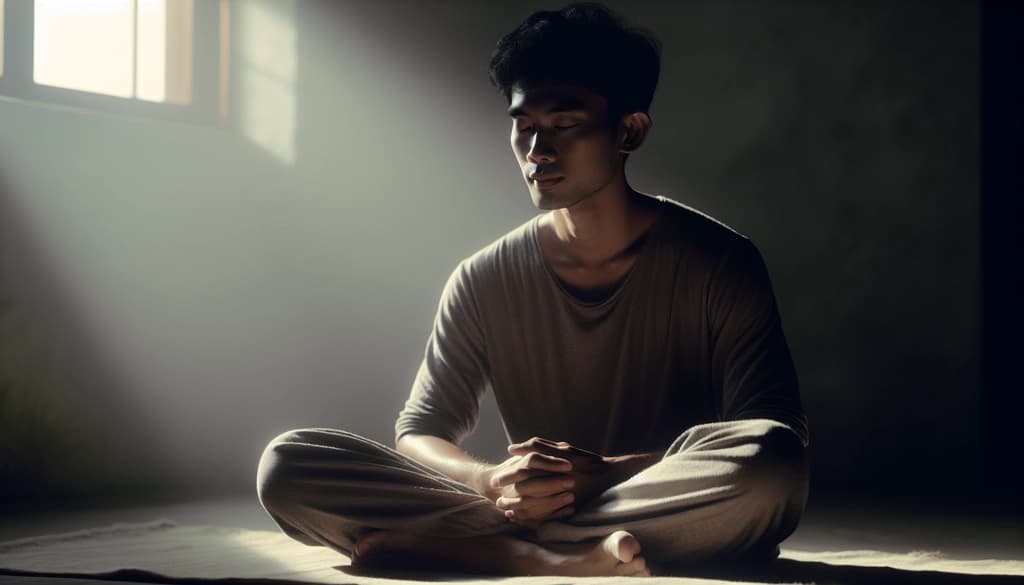Awakening Through Suffering: Understanding Desire, Discomfort, and Liberation

Why Suffering Matters in Eastern Philosophy
Suffering is not just a burden to bear — in Buddhist and other Eastern traditions, it’s a teacher. The Sanskrit word “dukkha,” often translated as suffering or dissatisfaction, describes the persistent feeling that things are not quite right. The meaning of dukkha is essential for understanding how discomfort motivates deeper reflection, not just avoidance. But instead of pushing discomfort away, these ancient philosophies suggest that bringing mindful attention to suffering reveals the roots of our unease.
If you’re curious about the source of suffering in life, you might also find it helpful to explore why do we suffer through a mindfulness lens. This question sits at the heart of many contemplative traditions.
The Connection Between Desire and Suffering
At the core of suffering, according to the Buddha’s early teachings, is the endless movement of desire — craving pleasure, avoiding pain, chasing what we don’t have. This cycle keeps the mind restless. Desire and suffering connection is an important insight in Eastern philosophy, helping us to see how chasing fulfillment can deepen our sense of tension and disconnection. When awareness meets this cycle directly, it’s possible to see how relentlessly trying to control or satisfy desire only deepens our sense of tension and disconnection. Recognizing this connection, even for a moment, can open the door to something more spacious.
These teachings are at the heart of what is known as the Four Noble Truths, which describe the reality of suffering, its cause, the possibility of its end, and the practices leading to awakening.
Liberation from Self-Centered Patterns
Awakening in this context means seeing, without judgment, how clinging to our personal stories and preferences tightens the grip of suffering. Mindful meditation offers a method for this: noticing the impulse to grasp, to escape, or to fix, and letting it be — even as it feels uncomfortable. Over time, attention becomes less narrowly focused on 'me and my problems,' and a new sense of freedom grows, rooted in connection beyond the self. This approach resonates with the idea of what is moksha, which suggests liberation is about release from rigid self-centeredness.
Learning how to let go of attachment is also central to this process, allowing us to relate more openly and less reactively to pain or pleasure. If you’d like to understand more, consider reading further on letting go of attachment.
A Guided Reflection: Meeting Suffering in Stillness
If you’d like to try exploring suffering as a doorway to awakening, begin by sitting quietly and noticing where any tension, discomfort, or longing shows up in the body. Instead of trying to fix it, allow yourself to breathe with it. Notice the quality of the breath as you bring attention to these sensations: is it shallow, tight, or restless? Let the exhale lengthen, if possible, and watch the play between desire, resistance, and acceptance. The invitation is not to eradicate suffering but to be present with it, kindly and curiously.
Integrating This Understanding into Daily Life
Moments of irritation, longing, or distress can become reminders to return to this practice — pausing, feeling where discomfort sits, and inviting the breath to anchor attention. Over days and weeks, small shifts may emerge: less reactivity, more openness, and a growing sense of freedom that doesn’t depend on constantly fulfilling desire. Liberation, in this view, is not about avoiding pain, but relating wisely to it, allowing suffering to transform into understanding. If you're interested in further methods for practice, you may want to explore how to end suffering in the context of everyday mindfulness.
The way forward is not always comfortable, and progress is rarely linear. Feel free to adapt this approach in any way that feels supportive to your own body and experience. This path is less about reaching an ideal state, and more about trusting that presence itself can be a source of real release.
